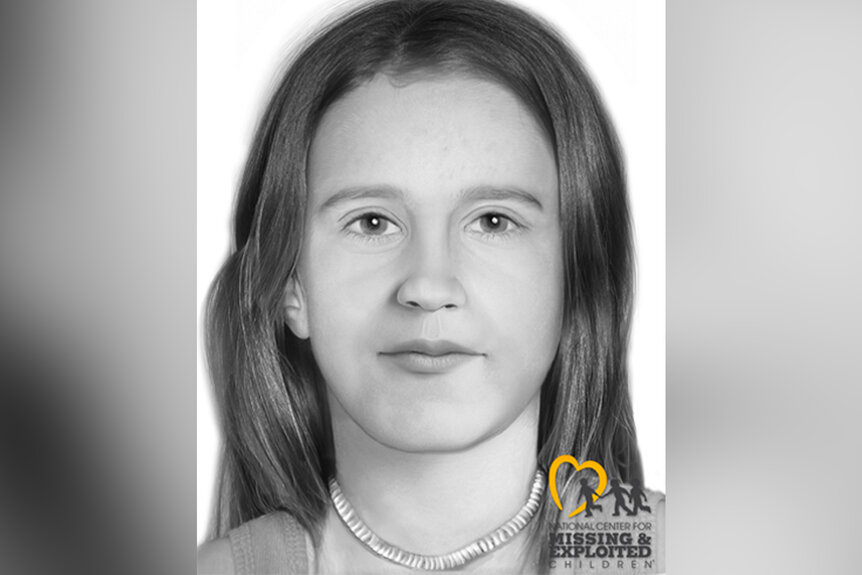Create a free profile to get unlimited access to exclusive videos, breaking news, sweepstakes, and more!
Skeletal Remains Found In Tennessee Mountains In 1985 Identified As Missing Indiana Teen
The Tennessee Bureau of Investigation and genetic genealogy firm Othram identified the body of "Baby Girl," found in 1985, as Tracy Sue Walker, a teen girl who went missing in Indiana in 1978.

Authorities in Tennessee hope the recent identification of a 1985 Jane Doe will provide them with answers.
It’s been more than 37 years since the skeletal remains of an unidentified young female were found in the Big Wheel Gap area of Elk Valley, Tennessee — about 50 miles north of Knoxville, and just south of the Kentucky border. The child was believed to have been around 10 and 15 years old and became known as “Baby Girl,” according to DNASolves.
Thanks to genetic genealogy performed by Othram, the child has now been identified as 15-year-old Tracy Sue Walker, according to the Tennessee Bureau of Investigation (TBI). Investigators say the teen was reported missing from the Lafayette, Indiana area in 1978 — nearly 400 miles from where her body was found.
Bureau agents must now figure out how her remains wound up in Campbell County, Tennessee.
Walker’s remains were discovered at a garbage disposal site near an abandoned strip mine on April 3, 1985, according to the National Center for Missing and Exploited Children (NCMEC). It was estimated that she died sometime between 1981 and 1984.
The Appalachian location was so heavily-wooded and remote that it's believed whomever disposed of her body would have had to have used a four-wheeler to bring her there, according to a 2020 article by NBC Knoxville affiliate WBIR-TV. It was a mountainous region frequented by coal and log haulers, and the girl’s skull was happened upon by a local person foraging for pokeweed — a native, poisonous plant which can be used for dyes or, when properly prepared, is used in poke sallet or as a herbal medicine in Appalachia.
A cause of death could not be determined due to the state of the bones, which had been scavenged by animals, but investigators at the time regularly referred to the child’s death as a homicide due to the location of the body.
“To think about a kid going through something so horrible at such a young age,” Special Agent Brandon Elkins said in 2020. “Innocence changes our perspective on cases. All homicides are bad, but when you have a child who doesn’t deserve to [be] murdered and discarded in this fashion, it changes everything about it.”
Biochemical analysis was used to estimate that the child spent the first few years of her life in Florida before moving to a different part of the country later on, possibly in the Midwest, according to NCMEC.
It was not believed she was in Campbell County for long.
In 2007, DNA from the child’s body was submitted to the University of North Texas Center for Human Identification (UNTCHI), where a profile was created. Entry into federal databases did not lead to the child’s identification.
TBI agents began to reexamine the case in 2013 and “began searching for new leads” in hopes of identifying the girl, according to DNASolves, a database that combines “crowdfunding, volunteered data, and cutting-edge genomics to solve the most ‘unsolvable’ cases.”
With the help of the University of Tennessee’s Anthropology Department, investigators sent a DNA sample to Othram, who used forensic-grade genome sequencing to create a genealogical profile of the victim, commonly referred to as genetic genealogy.
Kristen Mittelman, Chief Development Officer for Othram, e-mailed a statement to Oxygen.com, stating the testing was more complicated than average.
“The case faced technical challenges and failed testing before it came to Othram, consuming evidence and funding,” said Mittelman. “Fortunately, we have the support of an amazing philanthropist, Carla Davis, to fund the case, and we paired that with best-in-class testing at Othram to build a profile that helped investigators solve the case.”
In June, Othram provided investigators with a “possible relative” of the victim. Investigators tracked the possible relative to Indiana, which lead to more possible relatives in the Lafayette area.
With help from the Lafayette Indiana Police Department, investigators collected DNA from the child’s siblings. That confirmed the child was Tracy Sue Walker, born June 2, 1963.
The circumstances surrounding Walker's disappearance, however, remain unknown.
“Now, TBI Special Agents hope the public can help provide information that may help determine the circumstance leading to Tracy Sue Walker’s death and how she ended up in Campbell County,” investigators stated.
Anyone with information is encouraged to contact the Tennessee Bureau of Investigation at 1-800-TBI-FIND.


























